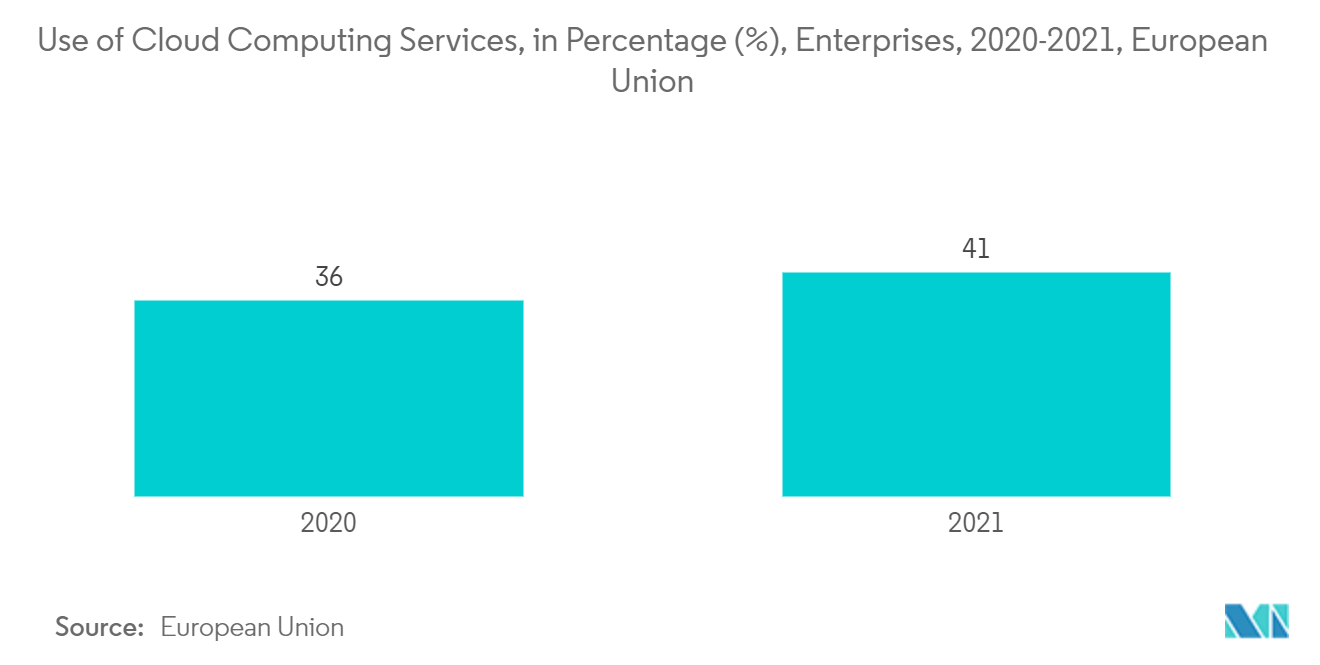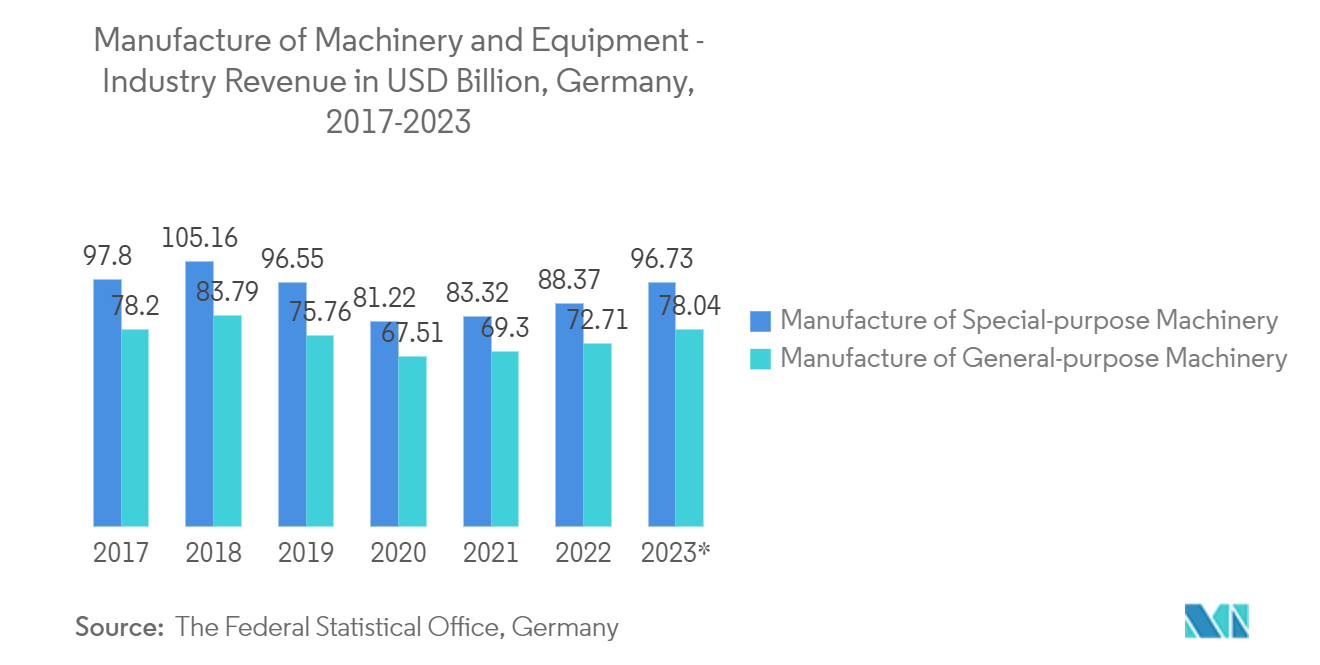Market Trends of Europe Warranty Management System Industry
Cloud Deployment Segment Holds Major Market Share
- The increasing realization among enterprises about the importance of saving money and resources by moving their data to the cloud instead of building and maintaining new data storage drives the demand for cloud-based solutions and, hence, the adoption of on-demand warranty management systems in the region. Moreover, owing to multiple benefits and over the next few years, cloud platforms and ecosystems are anticipated to serve as a launchpad for an explosion in the pace and scale of digital innovation.
- Furthermore, deploying public cloud services extends the boundary of trust beyond the organization, making security a vital part of the cloud infrastructure. However, the increasing usage of cloud-based solutions has significantly simplified enterprises' adoption of warranty management practices. With the increased adoption of cloud services, such as Google Drive, Dropbox, and Microsoft Azure, among others, and with these tools emerging as an integral part of business processes, enterprises must deal with security issues, such as losing control over sensitive data, raises the incorporation of on-demand warranty management solutions.
- One of the country's fastest-growing markets is the cloud, and rising investment in the sector is broadening the area of the industry under study. Large service providers increasingly manage the country's extensive public and hybrid cloud environments and hyper-scale services. For instance, in July 2022, Oracle announced it would introduce new sovereign cloud zones for the European Union in 2023 to serve its clients across the European Union better. Germany and Spain will host the first two EU sovereign cloud regions, which will be logically and physically distinct from the region's current public OCI regions. The new sovereign cloud regions will allow private businesses and government agencies to host sensitive, regulated, or strategically significant regional data and applications.
- Cloud-based solutions also benefit from lower capital expenditure requirements, making the business more compelling. Deploying cloud-based services can significantly reduce the Capex requirement as companies do not need to invest in hardware components. Cloud solutions also enable better prediction of the cost of an application, and companies don't need to incur as much upfront cost to incorporate the technology. Also, hardware and IT support savings make cloud-based solutions much more affordable.
- Furthermore, the growing adoption of cloud-based systems contributes to market growth. For instance, the European Union states that 41% of EU businesses adopted cloud computing last year. In the European Union, cloud computing usage grew, especially in retail. Cloud computing involves two components, which are cloud infrastructure and software applications. The growing demand for software applications in warranty management systems is expected to contribute to the market's growth during the forecast period.

Germany is Expected to Register the Fastest Growth
- Germany is one the fastest-growing countries in the region due to government regulations in different industries and the increasing development of software to satisfy customers' diverse needs. The demand for heavy equipment, automotive, and many more industries is increasing their production, driving the output of warranty management systems in the region so that the sectors may track the warranty periods and claims made on the products sold to customers.
- Recently, German lawmakers passed a new sales law that tightens warranty regulations in favor of customers. The two-year warranty period will be applicable for goods and services from the date of purchase or delivery. If a flaw is discovered near the conclusion of the warranty period, some modifications will be made to the conditions. The limitations are applicable only after the completion of four months after the purchase. This scenario gives the buyer extra time to make warranty claims if the issue materializes just before the expiration of the warranty period.
- The rise in partnerships between the automotive and warranty issuer firms is expected to drive the market studied. Such developments will push them to deploy new solutions in their product portfolio to streamline the workflow and track the claims. For instance, Europe Assistance Germany outsourced its portfolio of vehicle warranties to its long-time partner and warranty insurance Real Garant VersicherungAG to concentrate on its main business in the automotive industry, the processing of mobility services across Europe.
- According to German Trade and Invest, with almost 6,600 enterprises along the value chain, nearly 90% of which are SMEs, machinery and equipment are Germany's most active sector. The German Machinery and Equipment (M&E) sector continues to be the largest industrial employer in Germany, with a workforce of more than one million workers. The M&E sector is one of the most innovative in the nation, which spent about EUR 17 billion on research and development in total in the last year. The machine tools, drive technology, and material handling equipment sectors are some of the most significant in yearly turnover within the mechanical engineering sector. Such a high number of firms in the industry of equipment production have to maintain warranty documents for each assembled part they buy. Such hectic work can be reduced by deploying warranty management systems because they provide advanced tools to easily monitor and manage warranties, claims, and profitability.
- In Germany, population growth and aging, an increase in chronic disease prevalence, infrastructure improvements, and technological advancements have contributed to the sector's expansion. The warranty management systems efficiently manage the warranty processes for implanted devices like pacemakers and defibrillators. They streamline the return of the equipment under warranty and fill out the necessary paperwork in the event of a recall. In Germany, healthcare is made available through public and private healthcare. The government is making significant investments in the healthcare industry, which has led to the availability of innovative surgical tools such as biventricular pacemakers, implantable cardioverter defibrillators, implantable cardiac loop recorders, and pacemakers.


